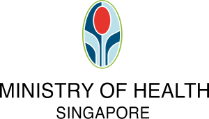Home dialysis is gentler, more convenient but take-up rate relatively low

Published on
24 May 2022
Published by
The Straits Times
SINGAPORE - Ms Irene Tam jokes that she hooked up with a new "boyfriend" in February last year. She means the automated peritoneal dialysis (PD) machine she hooks herself up to for nine hours every night to draw out waste materials from her blood.
"I call my machine my new boyfriend who always sleeps with me," she says, laughing.
The 51-year-old customer service professional has end-stage renal disease and her failing kidneys cannot remove toxins, extra salt and fluids from her blood. The home-based PD treatment allows her to work and support her bedridden 86-year-old mother.
"If I chose another treatment, it would affect my work and earning capacity," says Ms Tam, who has been treated for renal disease since her teens.
The cause of her renal disease is unknown. When she was told her condition had progressed to requiring dialysis, she had two options, PD and haemodialysis (HD), where she would have to visit a dialysis centre thrice a week and spend four hours each time hooked up to a dialysis machine.
This usually happens during the day and can be disruptive to those who work office hours, like Ms Tam.
Instead, she opted for PD and had a catheter or permanent tube inserted in her abdomen. A special sterile dialysis solution enters the abdomen through the catheter and circulates there, drawing out impurities.
The fluid is drained out with a machine at night, or by a machine-free, gravity-based exchange where the fluid drains into bags. A person using the latter type of dialysis, Continuous Ambulatory Peritoneal Dialysis, typically needs three exchanges during the day and one more in the evening.
Ms Tam was trained by nurses to use a PD machine, set up a clean room to house the machine as well as manage errors and the risk of infection.
"It's quite straightforward and not complicated," she says.
Only 13 per cent on peritoneal dialysis
According to the Singapore Renal Registry Report 2020, only 13 per cent of the roughly 8,500 people receiving dialysis in Singapore are on peritoneal dialysis. This percentage has stayed roughly constant since 2017, though experts say PD is gentler and could be suited for more patients than are currently on this treatment.
Dr Behram Ali Khan, medical director, National Kidney Foundation (NKF), cites the case of Hong Kong where 70 per cent of people on dialysis there receives PD and says peritoneal dialysis can be a long-term solution for suitable patients here as well. "Globally, PD has been shown to have similar outcomes to HD, with some studies showing better outcomes with PD in the first two years of being initiated on dialysis. PD is gentler on the body and therefore it can better preserve a patient's residual kidney function."
He adds: "PD is suitable for younger and healthier adults who want minimal disruption to their lives." A PD machine allows the fluid exchange to be done while a person sleeps.
In Singapore, he says, treatment outcomes for PD appear poorer than that for HD mostly as sicker patients are often placed on PD, thus skewing the data.
The treatment cost for a PD patient before subsidies is estimated to be between $1,600 and $2,000 a month. According to Dr Behram, patients receive subsidies from NKF and the government, as well as Medisave-approved insurances. Hence most pay as little as $50 or less a month out-of-pocket.
The information gap
People on PD require training and support at home. When Ms Tam was offered the option of PD, she had a number of questions. "I could not picture what the machine would look like, where to keep the dressing and handwash."
She searched online and was frightened by the number of search results about the risk of infection.
What helped was meeting a PD support group under NKF. Ms Tam's worries were allayed when a group member said his wife had been on PD for 13 years without contracting an infection.
NKF, which supports about 60 per cent of patients on dialysis in Singapore, addresses the information gap with a PD community support programme. Trained nurses make home visits to advise patients on diet, adhering to medication, managing wound sites and dealing with infection. Under this programme, which has been running for 10 years, nurses have made more than 15,000 home visits to PD patients.
Khoo Teck Puat Hospital increased the take-up of PD, thanks to a collaborative care model that includes pre-dialysis counselling and educating patients and caregivers on chronic kidney disease and dialysis options.
Dr Allen Liu Yan Lun, senior consultant in renal medicine at KTPH, says: "This approach ensures patients have built up their confidence to make an informed decision in their best interests."
The hospital also reduced waiting time for catheter insertion surgery by training nephrologists to do the procedure, rather than referring patients to other departments. It has gone from having 48 patients on PD in 2015 to 148 last year (2021). In 2020, over 35 per cent of new dialysis patients at KTPH chose PD as their long-term treatment, compared with about 10 per cent a decade ago.
Mr Christopher Foo, 52, started peritoneal dialysis in January last year (2021) and prefers the convenience of home-based dialysis.
The retired consultant used to take his late mother for haemodialysis at NKF and recalls her discomfort during the sessions. "It's quite a painful procedure. You have to go three or four times a week and you feel very tired afterwards," he says.
This January, he and his wife made an "unforgettable trip" to the United States to see friends. They made stops in three US states. A coordinator at KTPH helped them get suppliers in the US to send dialysis solution to Mr Foo's hotel rooms to enable him to carry out the necessary exchange using the gravity-based bag system.
"With this kind of system, your life can keep going, with your doctor's approval," says the father of two sons aged 16 and 23.
Ms Tam agrees. "Dialysis doesn't mean the end of the world," she says. "I hope that sharing my experience with it will help others."
Newly diagnosed kidney failure patients and their caregivers can call the NKF hotline on 1800-KIDNEYS (1800-5436397), or visit this website for assistance
Source: The Straits Times © Singapore Press Holdings Limited. Reproduced with permission.
ALL views, content, information and/or materials expressed / presented by any third party apart from Council For Third Age, belong strictly to such third party. Any such third party views, content, information and/or materials provided herein are for convenience and/or general information purposes only. Council For Third Age shall not be responsible nor liable for any injury, loss or damage whatsoever arising directly or indirectly howsoever in connection with or as a result of any person accessing or acting on any such views, content, information and/or materials. Such third party views, content, information and/or materials do not imply and shall not be construed as a representation, warranty, endorsement and/or verification by Council For Third Age in respect of such views, content, information and/or materials.







